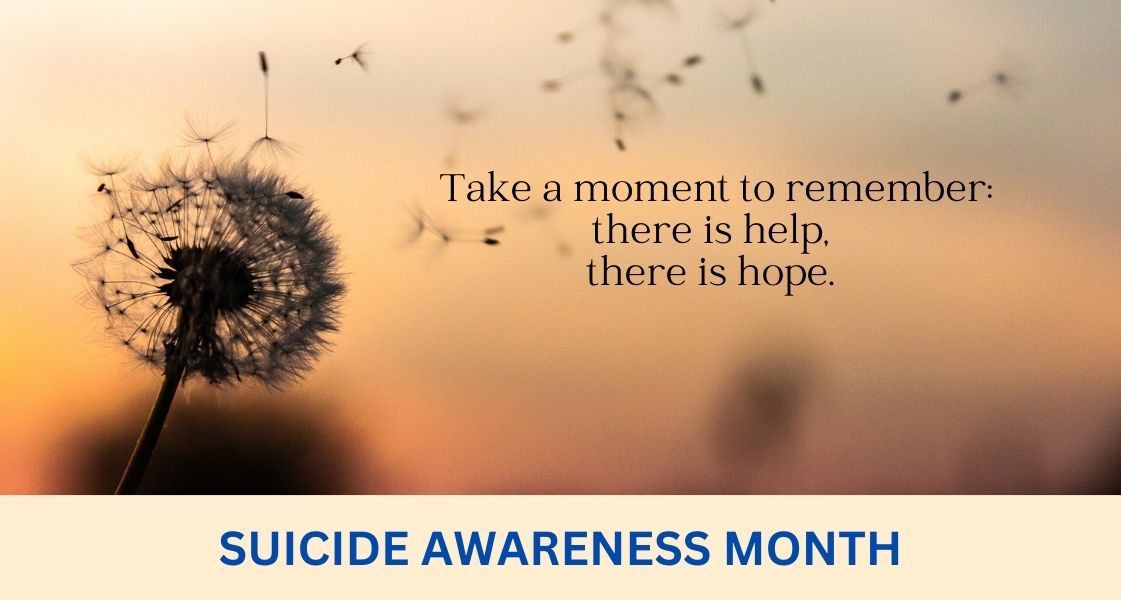Many of us have felt the grief of losing someone to suicide. Suicide can affect anyone, anywhere, and at any time. Many of us remember the deaths of Robin Williams, Anthony Bourdain, Kate Spade, or even more recently, Stephen “Twitch” Boss from suicide. These famous faces stunned the world with their deaths. It also pointed out that suicide can affect everyone; even someone with money and fame is not precluded from suicide.
Over the past two decades, the suicide rate has grown 32% and is the 10th leading cause of death nationwide among adults. From 2011 to 2022, over half a million lives (539,810) were lost to suicide, with 2022 showing the highest number of deaths on record. Within this period, the adjusted suicide rate increased by 16%. In response to the growing mental health crisis and demand for accessible crisis care, the federal government introduced a new crisis number, 988, available nationwide in July 2022. This easy-to-remember three-digit number connects callers who are suicidal or experiencing a mental health emergency to a crisis counselor at one of 200+ local crisis call centers. Though suicide deaths slowed in 2019 and 2020, they began to increase again in 2021 and 2022. Since its introduction in July 2022, 988 has received almost 5 million contacts, including almost 1 million from the Veteran’s Crisis Line.
By the Numbers
Suicide is a mental health crisis. In 2021, there were 48,183 deaths by suicide which equates to, on average, 132 deaths per day or a suicide every 10.2 minutes.
Suicide in the workplace is a growing concern. In fact, workplace suicides are up 39% since 2000. There were 307 workplace suicides in 2019 alone. Among high-income nations, the United States has the highest rates of suicides. The rise in workplace suicides coincides with the rising suicide statistics across the nation.
- At-Risk Populations –
- Adults over age 45 – Middle-aged people, especially men, have the highest rate of suicide compared to other groups. Eighty percent of all deaths by suicide in the U.S. are among men and women aged 45-54. Men aged 85 and older have the highest rate of any group in the country. Many factors contribute to this risk, including isolation, a history of violence, and access to lethal means.
- American Indians – Young American Indian men—especially in the Northern Plains—are at high risk for suicide compared to other groups. Young American Indian men face additional challenges, such as historical trauma, cultural distress, poverty, geographic isolation, and suicide in the community which can cause increased stress.
- Alaska Natives – In 2017, Alaska had the second-highest rate of suicide in the nation. The state began several prevention efforts, which are making headway in counteracting challenges such as mental health and substance abuse problems.
- Other Groups at Greater Risk of Suicide
- Veterans
- LGBTQ+
- Youth and Young Adults
- Attempt Survivors
- Loss Survivors
- Disaster Survivors
- Suicide in Youth
- Suicide is the second-leading cause of death for teens and young adults, ages 10-34 (CDC, 2022).
- 5% of adults ages 18-24 reported having seriously considered suicide in the past month. This is a higher percentage than any other adult age group (CDC, 2020).
- 8% of high school students reported having seriously considered suicide in the past year. This percentage is higher among females (24.1%), and lesbian, gay, or bisexual teens (46.8%) (CDC, 2020).
- 9% of high school students attempted suicide in the past year. This percentage is highest among females (11.0%), black teens (11.8%), and lesbian, gay, or bisexual teens (23.4%) (CDC, 2020).
- Key Takeaways
- CDC’s provisional data for 2022 show a record high of 49,369 suicide deaths, coming after modest declines in 2019 and 2020.
- In 2022, provisional data indicates the highest number of gun-related suicides on record; increases in firearm suicides are driving the increases in overall suicide deaths in recent years.
- Suicide deaths are increasing fastest among people of color, younger people, and those who live in rural areas with many groups seeing increases of 30% or more from 2011 to 2021.
Risk Factors, Warning Signs, and Protective Factors
Risk Factors for Suicide
Individual, relationship, community, and societal factors can increase the risk of suicide, such as:
- Previous suicide attempt(s).
- A history of suicide in the family.
- Substance use.
- Mood disorders (depression, bipolar disorder).
- Access to lethal means (for example, keeping firearms in the home or having access to unsecured prescription medications)
- Losses and other events (for example, the breakup of a relationship or a death, academic failures, legal difficulties, financial difficulties).
- History of trauma or abuse.
- Chronic physical illness, including chronic pain.
- Exposure to the suicidal behavior of others.
- Social isolation.
- Historical trauma.
- Stigma associated with seeking help.
Warning Signs of Suicide
- Often talking or writing about death, dying, or suicide.
- Making comments about being hopeless, helpless, or worthless.
- Expressions of having no reason for living, no sense of purpose in life; saying things like “It would be better if I weren’t here” or “I want out.”
- Increased alcohol and/or drug use.
- Withdrawal from friends, family, and community.
- Reckless behavior or more risky activities, seemingly without thinking.
- Dramatic mood changes.
- Talking about feeling trapped or being a burden to others.
- Major changes in performance at work.
- Major changes in their work attitude or behavior.
- Increased financial concerns.
What To Do
If you or someone you know is contemplating suicide, please know that they are not alone. There are many (free) resources (discussion groups, social media platforms, crisis hotlines, emotional support warmlines, etc.) where you can talk with someone confidentially about your feelings. Other ways you can support a friend, coworker, family member, or loved one in a crisis and experiencing suicidal thoughts include:
Ask someone – If you are concerned about someone you feel may be thinking about suicide, studies show that asking someone if they are having thoughts of suicide does not increase the likelihood of completed suicide, nor does it increase suicidal thoughts.
Be there for them. This could be by phone or in person.
Keep them safe. Reduce access to lethal means for those at risk.
Be there. Never tell someone to “just get over it.” Listen carefully and acknowledge their feelings.
Help them connect. There are many resources available to everyone. Cape Fox Corporation (CFC) also has an Employee Assistance Program (EAP) through Metlife Lifeworks with 24/7 support. You can call them at 1-888-319-7819, visit them online at metlifeeap.lifeworks.com, or go to their mobile app. You can also call or text the 988 Suicide and Crisis Lifeline number (988).
Stay connected. Follow up with them by giving them a call or visit. Send a text or an email to let them know that you are still present.
While many of the statistics can be alarming, and the topic of mental health and suicide is difficult, suicide prevention is possible, and there is hope. We are in this together, and you are not alone. Please know that asking for help is a sign of strength — not weakness. As Pope Francis reminds us, “A single individual is enough for hope to exist. And that individual can be you.”
If you or someone else is in crisis, contact the National Suicide Prevention Lifeline to speak with a certified listener by calling 988 or by chatting online at suicidepreventionlifeline.org. You Can also text SAVE to 741-741. It’s free, confidential, and available 24/7.
































